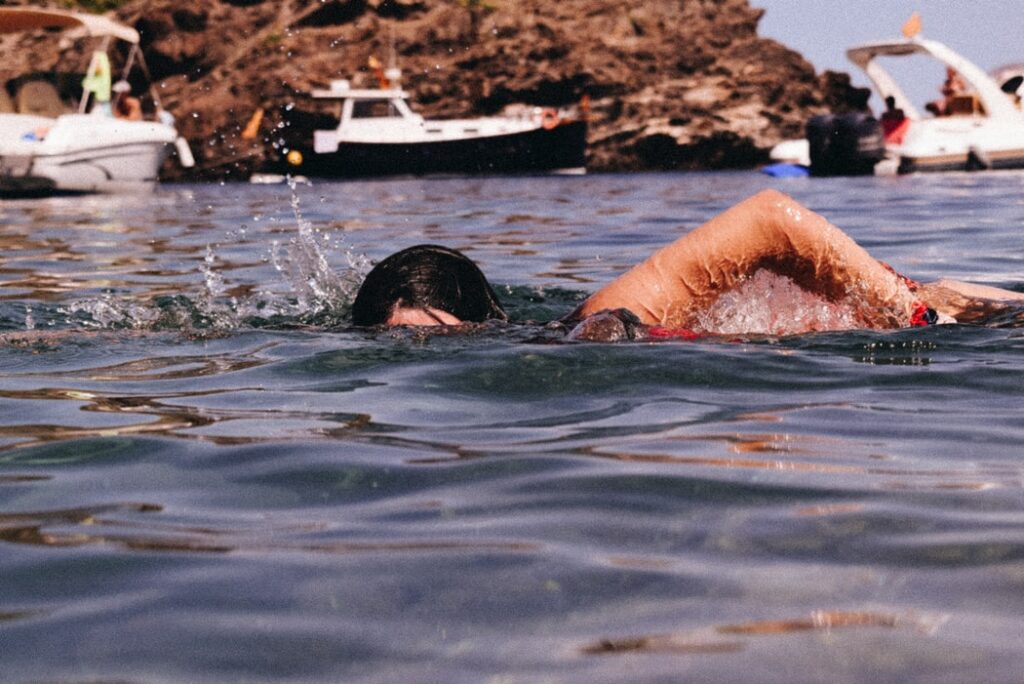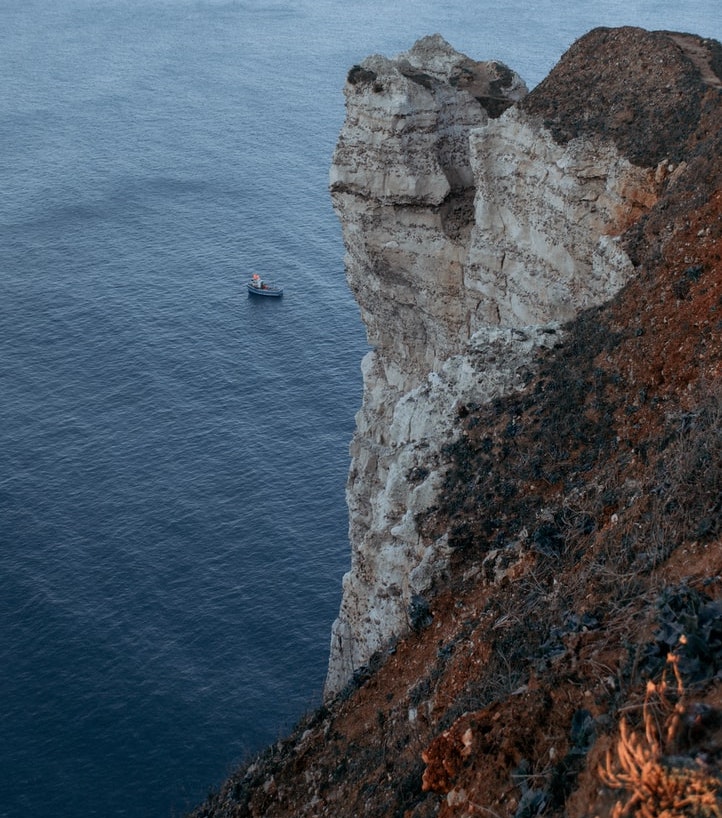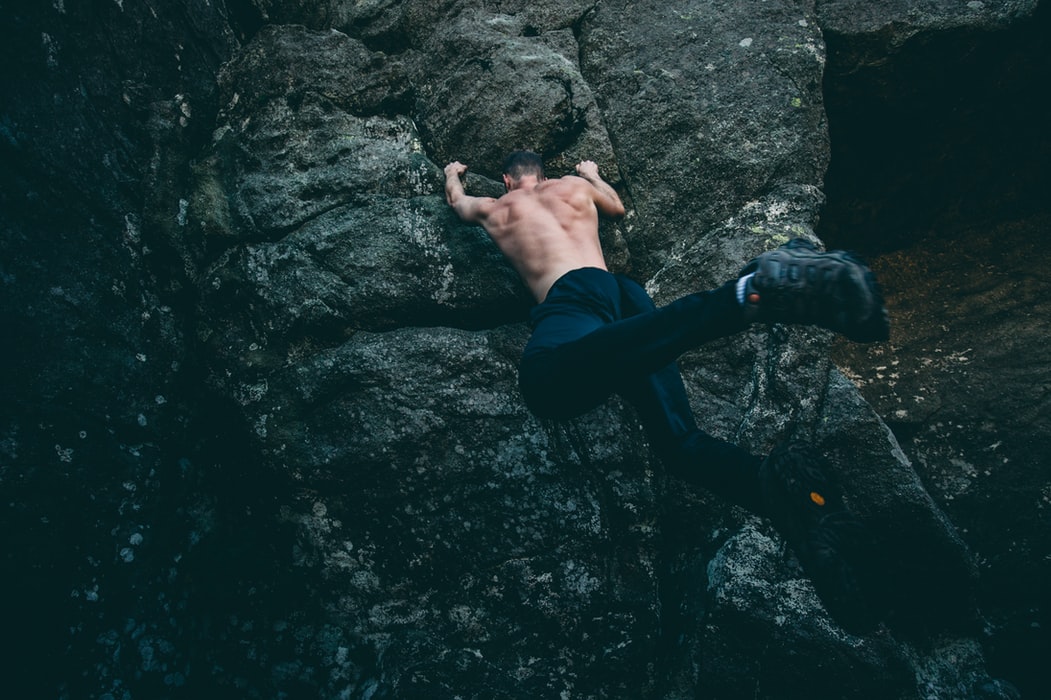The thrill and the experience you get while soloing remain unmatched by other climbing activities, especially if you love a refreshing swim as much as I do.
But the truth is, Deep Water Soloing can be dangerous if you don’t know what you’re doing – one wrong step or poor body posturing might cause a serious injury.
Don’t worry, though. I wrote this article to help you avoid any mishaps. After this quick guide, you’ll know: (1) the dynamics of deep water soloing, (2) possible injuries, and (3) how to prevent those injuries.
1. What is Deep Water Soloing & how to do it?
Deep Water Solo Climbing, or “psicobloc,” as they call it in Spain, is an extreme climbing sport where you boulder (or climb) rocks and cliffs over the shore. DWS is done without equipment or safety gear because you’ll fall in the water instead of solid ground if you lose your grip or balance.
You should have liquid chalk, a good pair of climbing shoes, and a decent amount of bouldering/climbing experience to do DWS safely. Once you have all three, get yourself a boat and ride to the climbing spot.
The next step? Start climbing. You don’t need to attach any ropes or harnesses.
Here’s my complete guide on what is deep water solo climbing and how to get started.
2. Solo Climbing: Dangerous or Safe?
Honestly, there are many reasons why a solo climbing adventure could go south, but that goes for any extreme sport. Surprisingly, the riskiest part of DWS is its “cushion” – the water. Why? Because water is incompressible – you cannot compress a gallon of water to occupy less volume of space.
Now let’s quickly review some science to understand this. Water, like other fluids, follows the Archimedes’ Principle. When you jump into a swimming pool, your speed and height are relatively minimal; this gives water molecules enough time to move away and make space.
But when you fall from a greater height like you’ll do when soloing, your height and velocity will be high at the moment of impact, thanks to good ol’ gravity. In turn, water won’t have enough time to be displaced, nor will your body generate enough external force to displace it forcefully.
You’ll experience an impact similar to hitting concrete, which could literally shatter your bones.
Piece of trivia: If you fall from 100 ft above water, your velocity will be about 100-112mph during impact. Taking the average weight of climbers to be about 160 lbs, you’ll hit the water with a force of 3262.5N to 3625N. That’s enough to make you feel like an adolescent polar bear is sitting on you.
In hindsight, deep water solo climbing is relatively safe when done correctly. The risk of injury while soloing is higher than in other climbing sports because you have less support equipment. Avoiding injuries while psicobloc-ing requires good bouldering skills and a good handle on the dynamics of jumping into water.
3. Common Injuries While Soloing
Injuries are a common occurrence in all sports, of course, but extreme sports take it one step further. Here are some ways your solo climbing adventure could go wrong:
I. Moment of Impact: Wrong Position or Debris
You know what happens when you hit the water at high speed in the wrong way. Even if your form is on point, you could still get hurt because you simply cannot control all factors mid-flight. For example, while falling, your hand could potentially hit a branch or crevice in the rock, altering your falling position during impact or hurting your arm.
Or you could fall on debris (rocks, etc.) if you don’t properly scout the area beforehand. Also, make sure there are no boats near the fall zone; you could throw yourself into a state of paralysis if you fall on a boat or any debris for that matter.
II. Cold Water Shock & Drowning
I know what you’re thinking.
“Jonathan, I know how to swim!”
It doesn’t matter unless you know how to swim while being unconscious. Even simple things like swimming are difficult when you’re in a state of panic or shock.
If the water is below 70°F, you could throw your body into a temporary shock. So be sure to check the temperature of the water beforehand. Sudden exposure to cold water could cause you to hear your own heartbeat while gasping for air.
When that happens, you MUST tell yourself that you’re in a state of shock. Then try to breathe slowly and get out of the water before drowning.

III. Trauma
Solo climbers are also at risk of blunt force trauma. Blunt trauma is from neck or head injuries. You could also become paralyzed if you hit your spinal cord.
Also, psychological trauma can occur if you fall in the wrong position and break your legs or burst your eardrums.
4. Precautions & Prevention
A. Scout your surroundings well
I’m big on scouting my surroundings when doing any kind of extreme sport. Every detail is critical.
Get to know the routes and tides in the area, water depth, water temperature, wind speed, and wind direction. Ensure the water is at least 10 feet deep and the fall zone and area around the rock are free from debris.
B. Right Gear
While you don’t need any ropes or harnesses, some essential equipment is required.
- Climbing shoes for a sure grip and clothes that can get wet and still be comfortable.
- Keep liquid chalk with you to enhance your grip while climbing. Rub some of it on your elbows so you can reapply it mid-climb.
C. Don’t go alone!
It’s called deep water “solo” climbing because you do it without equipment, not because you go alone. Ask any climbing pro, and they’ll advise against going alone.
Accidents happen when you least expect them. So you’ll want a partner there in case of injury or accidents. Even if nothing happens, having a partner there with you just makes the experience all the more memorable!
D. Learn How to Fall
By now, you know that the higher you climb, the harder you fall. So you gotta know how to fall correctly before psicobloc-ing.
- Standard “Coffin” Entry is done in deep waters. Jump in a feet-first vertical position with your hands at your sides to reduce the cross-sectional area on impact. And don’t look down to avoid bursting your eardrums or hurting your head.
- Armchair Entry works best in shallow water (<10 ft). Pull your legs up to your chest in a sitting position and extend your arms to the sides. But don’t do this on higher falls because you could get hurt.
F. Sea Level Traversing
Sea Level Traversing (SLT) is an excellent way to learn Deep Water Solo Climbing without relying on artificial walls or standard terrain bouldering.
SLT refers to climbing or bouldering close to sea level, so you don’t hit the water hard when you fall. This way, you’ll experience psicobloc-ing more practically.
F. Practice
It goes without saying, but you’ll need a lot of practice for DWS. You must know how to swim in deep waters and prepare for cold water shock by practicing standard breathing techniques.
Go for bouldering and sea level traversing before going solo climbing, and keep practicing your techniques. You can also visit climbing gyms that have artificial walls to practice psicobloc.
Stay safe, keep practicing, and always warm up before climbing.

5. Best Deep Water Soloing Locations
Now that you know how to take part in this breathtaking sport, check out some of the best locations around the country (and worldwide) to go solo climbing.
Some of the Best Deep Water Climbing Spots in the US: Pace Bend Park (Texas), Lake Powell (Utah), Laurel Lake (Kentucky), Banks Lake (Washington), and more.
Some of the Best Deep Water Climbing Spots Worldwide: Majorca (Spain), Railay (Thailand), Blue Grotto(Malta), Pembroke (UK), Azores (Portugal), and more.
Here is my complete guide to the best solo climbing locations and their cost breakdown.

